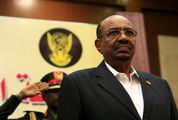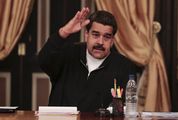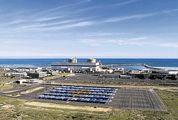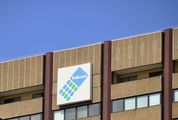Source:

BUSINESS DAY TV: ‘We want what is loss-making to be at least cash neutral’
by Transcript service,
2016-03-14 15:53:39.0
MIKE Schmidt is the CEO of African Rainbow Minerals.
BUSINESS DAY TV: Lower for longer is a common comment amongst commodity producers who have reported back to the market over the recent weeks and African Rainbow Minerals is no exception. It’s battening down the hatches and preparing to ride out weak commodity prices. CEO Mike Schmidt joins me on News Leader to tell us how they are doing.
Mike ... so your response to the commodity price downturn, cost cutting, holding back on Capex (capital expenditure) where you can, what else have you been doing to make sure you can ride this out?
MIKE SCHMIDT: That really underpins what we’ve done.... Sweating those assets is an important consideration so it’s not only on the cost curve but certainly looking on efficiencies and looking at productivity enhancement, coupled with pushing down on the cost curve, is something that we’ve focused on and been pretty successful. So we’ve seen quite a significant drop in our unit cost position over the last year.
BDTV: Is that sustainable, is that something you will be able to cut even further going into the current period?
MS: A number of the interventions that we’re looking at will only realise over the next year or two. For an example if you look at the Black Rock where we’ve done the modernisation and infrastructure upgrade, we’re only going to realise the benefits of that, and it’s a substantial amount of capital going into that, only realise that benefit two or three years from today. So yes we think that there can be further improvements which will reduce the total overhead costs by productivity and efficiency enhancements.
BDTV: So apart from the costs you’ve also been cutting back on Capex or deferring Capex, down 27% over the period. How do you do this though without impacting the long-term value of your operations?
MS: Most of our operations still have long life in excess of 20 years, it’s probably the shortest life asset. Some of them going into 35 years and so, if you hold your position in terms of volumes, all we need to apply in those is to apply what we call the sustaining capital and that’s a component. So we focus on the sustaining capital and value enhancing capital where it will again bring us down the cost curve. But the opportunity to grow is obviously looked at quite carefully whether we should invest into growth capital and that’s what we’ve been curtailing over the last two years. And in this price environment going forward if it persists longer, we’ll do that. So I think we’re sustainable, we’re manageable in this environment and we’re well positioned to ride this out, with a very healthy balance sheet and very low gearing.
BDTV: And how quickly will you be able to respond when prices do start to recover and ramp up that Capex again?
MS: Quite easily, as long as you keep mines as a going concern. In terms of expanding on our existing operations where it’s probable, that’s pretty easy to do and not a consideration. These are not care and maintenance. Some of the areas which are not sustainable we’ve closed down and that won’t be necessarily reopened. Like the smelter business, the uneconomical smelters are closed down, repositioning ourselves with that more sustainably, like Sakura which is coming on steam at the end of March and will be in full production within the next year. So that migration is well considered.
BDTV: Any of your other mines that aren’t meeting the hurdle race that you’ve set for yourselves that you might have to close down or that you might be looking at? So Lubambe in Zambia for instance on the copper belt, there is a review of that mine, what do you think the outcome will be and why is it under such a strict review?
MS: In fairness we need to evaluate all the options on the table and I want to take you back. It’s by world standards a good resource, 2% copper in the existing mine and the downward extension which majors more than 4% copper at double the seam width, more than 10m thick. By any world standard that’s a very high quality ore body. So that has to be taken into consideration and the fact that we spent a significant amount of capital with state of the art plant, good modern infrastructure and had this mine been ramped up to critical mass today it would certainly be reviewed differently to where it is. It’s really a timing issue in the market. No one of us can really time the market in terms of the commodity price fall and what we’ve seen in the copper business is that ... particularly copper has had a precipitous fall since mid-November and chasing that and sustaining that, when we haven’t got critical mass is something we’re very mindful of. So our key consideration today is cash preservation and preserving the value of that ore body. And so the options include that as well. And, mindful that in Zambia we have Zambian partners and we have international partners being Vale.
BDTV: You’re in for all of your commodities to be produced in the lower 50 percentile of the cost curve, and I should imagine this is a moving target at this stage because everybody is aiming for the same thing. How difficult is it to meet that hurdle rate?
MS: I don’t think it’s a major challenge, even in an environment where exactly what you’ve said has happened, more than 70% of our operations today are below that. One or two that are strained is the alloy business in Komati based on the discussion we’ve had. The other consideration which we’re looking at and we’ve come leaps and bounds in terms of getting that down the cost curve is the Modikwa operation but a lot of our operations, the iron ore has done very well, the interventions in terms of manganese will position us on the lower end of the cost curve going forward and Two Rivers Platinum doing exceptionally well. Even in Komati, albeit that nickel prices have come off 43% this year, we’ve done major intervention in terms of capital reduction, cash containment and repositioned that mine. So, for example, we have closed the underground, that’s a high-cost element. But that mine today even at the low nickel price is sustainable and in fact profitable and there’s no reason to believe that it will move up the cost curve.
BDTV: You’ve reported a 51% drop in headline earnings for the first half, a basic loss of close to R1bn and that’s due to the impairment at Lubambe, with the cost measures or the cost-cutting measures you have outlined and what you expect to kick in, do you expect to start reversing those losses as you go into the second half and into next year?
MS: The work we’ve done is certainly ... that’s why we’ve done that. We want to get ourselves where it’s loss making, at least to a cash neutral position and where it has become profitable to increase those margins. The early indications with where we are in terms of our cost position, and we want to believe with caution to say ... we’re seeing the bottom of this multiyear low commodity, particularly from a dollar base, and there’s a lot of indications that we see in a swing and an upturn in some the prices. I don’t believe they’re sustainable in the long term. Obviously, it is a supply-demand aspect but there seems to be a lot more closures coming to the fore. And ... I think it was in your opening statement, as long as we’re below the 50th percentile it’s really a position where we believe we can ride through this rough water and benefit going out. So the interventions we’ve done in terms of cost cutting will certainly benefit and position us well into the future.
MIKE Schmidt is the CEO of African Rainbow Minerals.
BUSINESS DAY TV: Lower for longer is a common comment amongst commodity producers who have reported back to the market over the recent weeks and African Rainbow Minerals is no exception. It’s battening down the hatches and preparing to ride out weak commodity prices. CEO Mike Schmidt joins me on News Leader to tell us how they are doing.
Mike ... so your response to the commodity price downturn, cost cutting, holding back on Capex (capital expenditure) where you can, what else have you been doing to make sure you can ride this out?
MIKE SCHMIDT: That really underpins what we’ve done.... Sweating those assets is an important consideration so it’s not only on the cost curve but certainly looking on efficiencies and looking at productivity enhancement, coupled with pushing down on the cost curve, is something that we’ve focused on and been pretty successful. So we’ve seen quite a significant drop in our unit cost position over the last year.
BDTV: Is that sustainable, is that something you will be able to cut even further going into the current period?
MS: A number of the interventions that we’re looking at will only realise over the next year or two. For an example if you look at the Black Rock where we’ve done the modernisation and infrastructure upgrade, we’re only going to realise the benefits of that, and it’s a substantial amount of capital going into that, only realise that benefit two or three years from today. So yes we think that there can be further improvements which will reduce the total overhead costs by productivity and efficiency enhancements.
BDTV: So apart from the costs you’ve also been cutting back on Capex or deferring Capex, down 27% over the period. How do you do this though without impacting the long-term value of your operations?
MS: Most of our operations still have long life in excess of 20 years, it’s probably the shortest life asset. Some of them going into 35 years and so, if you hold your position in terms of volumes, all we need to apply in those is to apply what we call the sustaining capital and that’s a component. So we focus on the sustaining capital and value enhancing capital where it will again bring us down the cost curve. But the opportunity to grow is obviously looked at quite carefully whether we should invest into growth capital and that’s what we’ve been curtailing over the last two years. And in this price environment going forward if it persists longer, we’ll do that. So I think we’re sustainable, we’re manageable in this environment and we’re well positioned to ride this out, with a very healthy balance sheet and very low gearing.
BDTV: And how quickly will you be able to respond when prices do start to recover and ramp up that Capex again?
MS: Quite easily, as long as you keep mines as a going concern. In terms of expanding on our existing operations where it’s probable, that’s pretty easy to do and not a consideration. These are not care and maintenance. Some of the areas which are not sustainable we’ve closed down and that won’t be necessarily reopened. Like the smelter business, the uneconomical smelters are closed down, repositioning ourselves with that more sustainably, like Sakura which is coming on steam at the end of March and will be in full production within the next year. So that migration is well considered.
BDTV: Any of your other mines that aren’t meeting the hurdle race that you’ve set for yourselves that you might have to close down or that you might be looking at? So Lubambe in Zambia for instance on the copper belt, there is a review of that mine, what do you think the outcome will be and why is it under such a strict review?
MS: In fairness we need to evaluate all the options on the table and I want to take you back. It’s by world standards a good resource, 2% copper in the existing mine and the downward extension which majors more than 4% copper at double the seam width, more than 10m thick. By any world standard that’s a very high quality ore body. So that has to be taken into consideration and the fact that we spent a significant amount of capital with state of the art plant, good modern infrastructure and had this mine been ramped up to critical mass today it would certainly be reviewed differently to where it is. It’s really a timing issue in the market. No one of us can really time the market in terms of the commodity price fall and what we’ve seen in the copper business is that ... particularly copper has had a precipitous fall since mid-November and chasing that and sustaining that, when we haven’t got critical mass is something we’re very mindful of. So our key consideration today is cash preservation and preserving the value of that ore body. And so the options include that as well. And, mindful that in Zambia we have Zambian partners and we have international partners being Vale.
BDTV: You’re in for all of your commodities to be produced in the lower 50 percentile of the cost curve, and I should imagine this is a moving target at this stage because everybody is aiming for the same thing. How difficult is it to meet that hurdle rate?
MS: I don’t think it’s a major challenge, even in an environment where exactly what you’ve said has happened, more than 70% of our operations today are below that. One or two that are strained is the alloy business in Komati based on the discussion we’ve had. The other consideration which we’re looking at and we’ve come leaps and bounds in terms of getting that down the cost curve is the Modikwa operation but a lot of our operations, the iron ore has done very well, the interventions in terms of manganese will position us on the lower end of the cost curve going forward and Two Rivers Platinum doing exceptionally well. Even in Komati, albeit that nickel prices have come off 43% this year, we’ve done major intervention in terms of capital reduction, cash containment and repositioned that mine. So, for example, we have closed the underground, that’s a high-cost element. But that mine today even at the low nickel price is sustainable and in fact profitable and there’s no reason to believe that it will move up the cost curve.
BDTV: You’ve reported a 51% drop in headline earnings for the first half, a basic loss of close to R1bn and that’s due to the impairment at Lubambe, with the cost measures or the cost-cutting measures you have outlined and what you expect to kick in, do you expect to start reversing those losses as you go into the second half and into next year?
MS: The work we’ve done is certainly ... that’s why we’ve done that. We want to get ourselves where it’s loss making, at least to a cash neutral position and where it has become profitable to increase those margins. The early indications with where we are in terms of our cost position, and we want to believe with caution to say ... we’re seeing the bottom of this multiyear low commodity, particularly from a dollar base, and there’s a lot of indications that we see in a swing and an upturn in some the prices. I don’t believe they’re sustainable in the long term. Obviously, it is a supply-demand aspect but there seems to be a lot more closures coming to the fore. And ... I think it was in your opening statement, as long as we’re below the 50th percentile it’s really a position where we believe we can ride through this rough water and benefit going out. So the interventions we’ve done in terms of cost cutting will certainly benefit and position us well into the future.





















Login OR Join up TO COMMENT